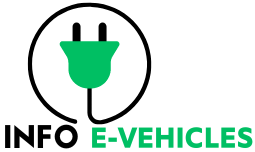Mercedes-Benz has achieved regulatory milestones in two key states, California and Nevada, allowing the integration of distinctive turquoise lights to signal the activation of its cutting-edge automated driving mode. This pioneering announcement comes as Mercedes becomes the first automotive giant to secure exemptions for such innovations in the United States.
Markus Schäfer, Mercedes-Benz board member and Chief Technology Officer of Development & Purchasing, underscored the historic nature of this achievement, stating, “We are the first automaker in the world to receive such approvals in the U.S., specifically in California and Nevada.” He emphasized the paramount importance of effective communication between automated vehicles and their surroundings as the number of these vehicles on the road continues to rise.
The Turquoise Light Integration
The revolutionary turquoise lights will be seamlessly integrated into the headlights, taillights, and side mirrors of specific Mercedes models, namely the EQS and S-Class vehicles equipped with the Drive Pilot partially automated driving mode. This distinctive color choice aligns with the recommendations outlined in SAE International’s J3134, which establishes guidelines for “ADS Marker Lamps” and proposes turquoise as the designated color for automated driving systems.
Mercedes’s decision to opt for turquoise stems from its desire to differentiate from existing emergency and traffic light colors. This move brings a refreshing contrast to the conventional amber, white, and red lights, commonly associated with turn signals, forward driving, and reverse driving, respectively.






Regulatory Landscape
The California permit comes with an initial two-year limit, while the Nevada permit is model-specific, applying to the 2026 EQS and S-Class model years. Notably, the Nevada permit remains valid until any legislative changes are enacted by the state legislature.
Mercedes, a proponent of establishing industry-wide standards, hopes that the introduction of turquoise lights will pave the way for regulations governing automated driving indications globally. The absence of such regulations currently underscores the pioneering nature of this initiative.
Drive Pilot Takes the Lead
The Drive Pilot, Mercedes’s automated driving system accredited with Level 3 automation by SAE International, received U.S. approval earlier this year. The company plans to initiate customer deliveries of Drive Pilot-equipped vehicles in early 2024, initially targeting the California and Nevada markets.
Navigating the Road Ahead: Industry Scrutiny
This announcement coincides with heightened scrutiny surrounding Tesla’s Full Self-Driving (FSD) beta, operating at Level 2 automation. Unlike Mercedes’s Level 3 system, Tesla’s FSD requires drivers to remain vigilant and ready to assume control at any moment. Despite offering automated steering, braking, and acceleration, Tesla’s FSD beta has sparked safety concerns due to the persistent need for driver oversight.
Conclusion
Mercedes’s approval to use turquoise lights for automated driving mode signifies a remarkable leap forward in enhancing communication between autonomous vehicles and other road users. The company’s commitment to establishing industry standards positions it as a trailblazer in the evolving landscape of automated driving.
ALSO READ :-
Volkswagen Implements Strategic Workforce Reduction to Enhance Performance and Cut Costs
Panasonic Excludes Oklahoma from Consideration for New Battery Plant Site
SOURCE : TESLARATI
FAQs
Why did Mercedes choose turquoise lights for self-driving mode?
Mercedes opted for turquoise lights as a distinctive color to signify self-driving mode, aligning with industry guidelines and differentiating from conventional emergency and traffic light colors. This choice enhances visibility and contributes to effective communication with other road users.
Which Mercedes models will feature the turquoise lights?
The turquoise lights will be seamlessly integrated into the headlights, taillights, and side mirrors of specific Mercedes models, specifically the EQS and S-Class vehicles equipped with the Drive Pilot partially automated driving mode, marking a pioneering step in automotive design.
What is the significance of the California and Nevada approvals?
The approvals from California and Nevada signify a landmark achievement for Mercedes, making it the first automaker globally to receive exemptions for using turquoise lights in self-driving mode. The California permit has an initial two-year limit, while the Nevada permit is model-specific, applying to the 2026 EQS and S-Class model years.
How does Drive Pilot contribute to automated driving?
Drive Pilot, Mercedes’s automated driving system accredited with Level 3 automation by SAE International, plays a pivotal role in enabling self-driving capabilities. The system has gained U.S. approval, and Mercedes aims to initiate customer deliveries of Drive Pilot-equipped vehicles in early 2024, starting in California and Nevada.
What sets Mercedes’s approach apart from other automated driving systems?
Mercedes’s decision to utilize turquoise lights as a signal for self-driving mode is not only innovative but also aligns with its commitment to establishing industry-wide standards. This approach reflects a proactive stance in addressing the evolving landscape of automated driving, differentiating it from conventional systems and sparking a potential shift in industry practices.
